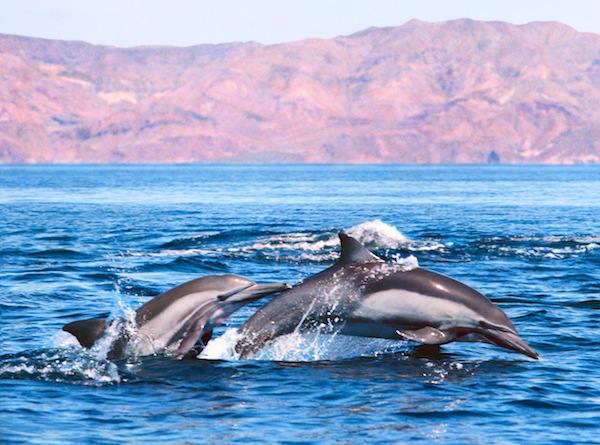Dolphins are found living in bodies of water around the world. They are found in all of the oceans, and they are a common attraction for people to come see. Dolphins are known as being gentle creatures and there is a type of mystic curiosity surrounding them too.
Most of them live in saltwater but they can also live in freshwater locations. Only a handful of the species though are known to thrive in freshwater regions. They tend to stick to the shallow areas of the water found along the continental shelves. The types of dolphins you will find depend on the species though in terms of the location.
Dolphins tend to like areas that have warmer temperatures too. However, sometimes they are found in colder water due to the need for food. It is very interesting to see some places where they live. Studies show that the habitat of the dolphin is quite diversified due to environmental factors and food accessibility. They are very smart creatures and have the intelligence to modify their habitat when possible for survival.
For example, the Bottlenose Dolphin is found in all of the oceans. They tend to live around the coastline areas. Migration is a big part of life for all dolphins. They have to move where there is food so the amount of migrating they will do can vary. Some of them have been observed in a very small area all the time due to plenty of food being found there. The migration can be for a short period of time or until food resources have started to be replenished.
This is also why some locations where there used to be dolphins either have very few or they haven’t been seen for a while. They aren’t going to be returning to locations where the habitat is too polluted or there isn’t enough food for them to survive. Even changes to the water temperatures can be reasons for them no longer to return to locations they once called home.
The habits of various species of dolphins can also vary by location. For example, some of them have set migrational patterns that they will follow year after year. Others route changes that will occur based on food supply and even the temperature of the water. They are to successfully migrate hundreds of miles annually. It is believed that global warming plays a vital role in the migration for dolphins as it affects their supply of food.
Some of the dolphins out there are found in much smaller habitat locations. For example, the Yangtze River Dolphin is primarily found in freshwater around the Yangtze River in China. Hector’s Dolphins are found around the coastal areas of New Zealand. They tend to be scattered here around the South Island.
Spinner Dolphins do have a wider diversity as they are found in the Pacific, Atlantic, and Indian Oceans. They tend to live in the warmer water areas around islands. However, they have been known to be in the deeper water too when they need to find more food.
The dolphin can be very vulnerable to problems in their environment. For example pollution due to the sensitivity of their skin. Loss of habitat is also a problem due to the fact that so many humans have now taken to enjoying a variety of water related activities in these same locations. This is why there are so many great conservation programs in place to help protect them.
Dolphins do live well in captivity, but the focus of most of these conservation strategies involves returning the dolphins to habitats in the wild. They also involve re-introducing them to locations that were once inhabited by dolphins but aren’t now. Before this could be done successfully though careful observations about the environment will have to be done.
Some of the dolphins living in captivity were once in the wild, but won’t be able to survive there any longer due to injuries. By placing them in captivity they are able to have a good quality of life that would be impossible for them to create in the wild.
Dolphins live in groups known as pods, and it is very unusual that you will see only one or two of them. This could be due to sub groups for hunting. The size of the pods varies but usually ranges from 6 to more than 20 members. They are very protective of each other and form very strong bonds. However, there can be some aggressive behaviors within those pods. There have been observations of some pod members picking on weaker members.
Part of the benefit of living in the pods though is to keep away dangerous predators such as sharks. The young are usually at the center of the pod so that they can be protected in their habitat by the larger dolphins on the outer rim.








